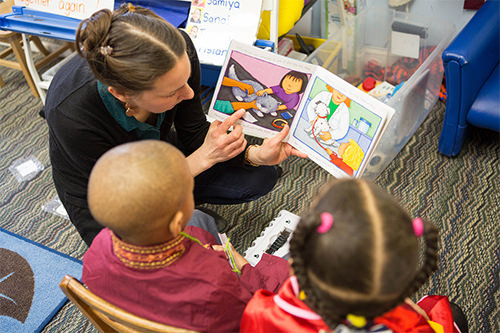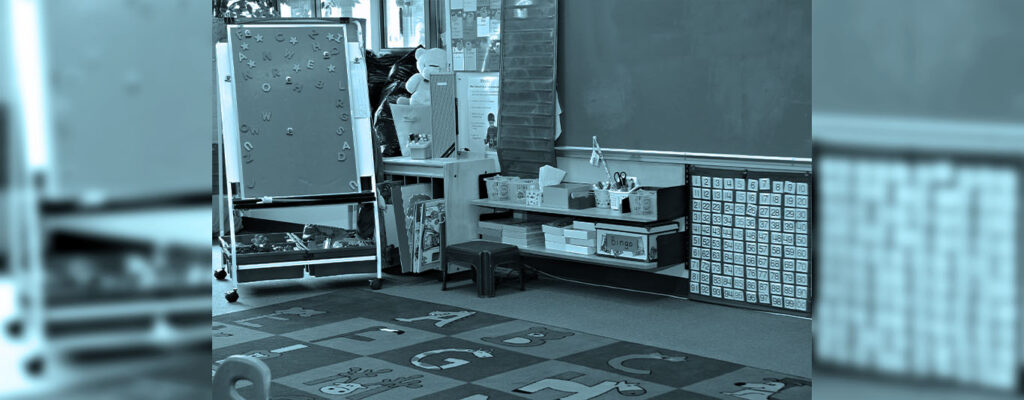


The first few years of a child’s life are critical; a child’s brain grows to 90% of its adult size by age five, and from 3 to 4 years of age, children show rapid growth in literacy. Preschool has been shown to give children a head start in their development; children in preschool have vocabulary scores that are 31% higher than children who do not attend.
The experiences children have in preschool have profound effects on their academic futures. Long-term research studies have shown that children who attend preschool are less likely to smoke, and more likely to graduate from college, own their own homes, and have a savings account. But which literacy skills can preschoolers be expected to develop, and how exactly will they be taught?
The central goal during the preschool years is to enhance children’s exposure to print. Children begin to “read” their favorite books by themselves, focusing mostly on retelling the story from the pictures. Eventually, they progress from describing each picture individually to weaving a story from picture to picture using language that sounds like reading or written language. Some teachers use Big Books to help children distinguish many print features, including the fact that print (rather than pictures) carries the meaning of the story, that the strings of letters between spaces are words, and that reading progresses from left to right and top to bottom.
Children also experiment with writing by forming scribbles, letter-like forms, and random strings of letters. They also begin to use “handwriting” or wavy scribbles to imitate adult cursive writing. Letter-like forms are the young child’s attempt to form alphabetic letters; these forms of writing eventually will develop into standard letters. When using various forms of writing, children maintain their intention to create meaning and will often “read” their printed messages using language that sounds like reading.
The single most important activity for building literacy skills is reading aloud to children. High-quality book reading occurs when children feel comfortable and are active participants in reading. Children may talk about the pictures, retell the story, discuss their favorite events, and listen to multiple readings. It is the talk that surrounds the story reading that gives it power, helping children to bridge what is in the story and their own lives. Having a “classroom library” where children can access a variety of books daily ensures that they develop the habit of reading as lifelong learning.
The classroom environment teaches children to read. Books are not the only means of providing children with exposure to written language. Children learn a lot about reading from the labels, signs, and other kinds of print they see around them. Highly visible print labels on objects, signs, and bulletin boards in classrooms demonstrate the practical uses of written language. In classrooms rich with print, children also incorporate literacy into their play.
Preschool is not only about teaching methods and not only about the classroom that children spend time in. It is the combination of these factors, the daily interactions with print that will turn preschoolers into readers. The early experiences of preschool will expose children to the importance of reading and writing, and give them the opportunity to take their first steps into the world of literacy.


CLI partners with Massachusetts early education programs to strengthen leadership, enhance instruction, and improve child outcomes through coaching and professional development.